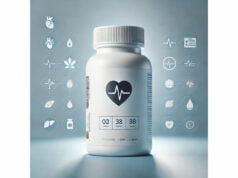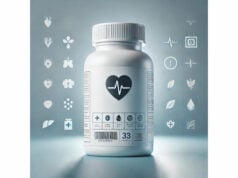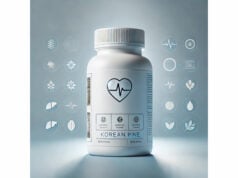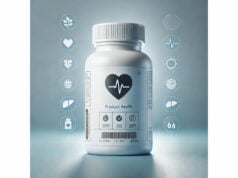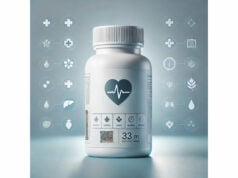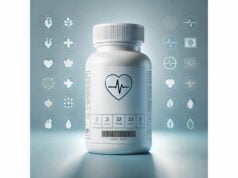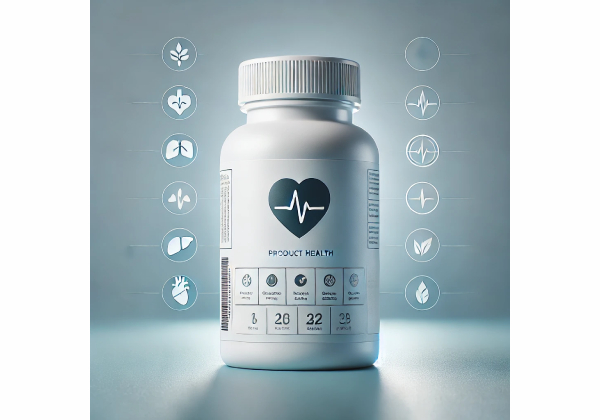
Kyprolis (carfilzomib) is a second-generation proteasome inhibitor used to treat relapsed or refractory multiple myeloma in adults. It blocks the 20S proteasome’s chymotrypsin-like activity, driving myeloma cells into apoptosis while sparing most healthy tissues. Compared with older agents in its class, Kyprolis binds more selectively and irreversibly, which can translate to deeper responses in certain combinations. Modern regimens pair Kyprolis with dexamethasone alone (Kd) or with additional backbone therapies such as lenalidomide (KRd), daratumumab (DKd), or isatuximab (Isa-Kd). Dosing can be once weekly at higher intensity or twice weekly at lower per-dose exposure, and schedules are tailored to prior lines of therapy, fitness, and convenience. As with all potent anti-myeloma drugs, benefits come with risks: cardiac events, hypertension, dyspnea, thrombocytopenia, and rare but serious pulmonary or renal complications. This guide explains what Kyprolis does, who may benefit, how it’s given, realistic dosing frameworks used in practice, the most important safety steps to reduce risk, and the strength of evidence behind common combinations—so you can have an informed, productive conversation with your oncology team.
Fast Facts
- Improves response depth and progression-free survival in relapsed or refractory multiple myeloma, especially in doublet/triplet combinations.
- Major risks include cardiac toxicity, hypertension, dyspnea, and thrombocytopenia; hydration, premedication, and close monitoring are essential.
- Typical dosing ranges 20/27 mg/m² twice weekly, 20/56 mg/m² twice weekly, or 20/70 mg/m² once weekly, always intravenous with dexamethasone and per-cycle breaks.
- Avoid if pregnant; use extreme caution in patients with significant cardiovascular disease, uncontrolled hypertension, or severe pulmonary disease unless an oncologist deems benefits outweigh risks.
Table of Contents
- What Kyprolis is and how it works
- Who benefits and when it is used
- How Kyprolis is given: dosing made clear
- Essentials for safer treatment
- Side effects: what to watch and who should avoid
- Evidence roundup and choosing a regimen
What Kyprolis is and how it works
Kyprolis (carfilzomib) is an intravenous proteasome inhibitor tailored for plasma-cell malignancy biology. Myeloma cells produce huge amounts of immunoglobulins and misfolded proteins; they depend on the ubiquitin–proteasome system to dispose of this burden. Kyprolis binds the 20S proteasome’s chymotrypsin-like active site (β5 subunit) with high specificity and forms an irreversible adduct. When the proteasome’s “shredder” stalls, misfolded proteins accumulate, endoplasmic reticulum stress rises, and pro-apoptotic signaling switches on. Normal cells can compensate; myeloma cells often cannot.
Three properties make Kyprolis clinically distinctive:
- Irreversible target engagement. In contrast to bortezomib’s reversible binding, Kyprolis locks onto its active site. Tumor cells must synthesize new proteasomes to recover, which can deepen on-target killing between doses.
- Selectivity profile. At labeled doses, Kyprolis primarily inhibits the chymotrypsin-like activity with less off-target spillover to caspase-like and trypsin-like sites, a profile associated with potent antimyeloma activity and a lower risk of peripheral neuropathy than first-generation agents.
- Combination synergy. Steroids (dexamethasone) enhance proteotoxic stress; immunomodulatory drugs (lenalidomide, pomalidomide) and anti-CD38 antibodies (daratumumab, isatuximab) add immune-mediated clearance and complementary tumor control. These synergies underpin modern doublet and triplet regimens.
Pharmacokinetically, Kyprolis has rapid systemic clearance and short plasma half-life, but its pharmacodynamics persist because of irreversible proteasome binding. That’s why dosing intervals (once or twice weekly) can still sustain deep proteasome inhibition. Infusions are short—typically 10 or 30 minutes—after reconstitution from lyophilized vials (10 mg, 30 mg, 60 mg single-use). Because the drug is given intravenously in clinic, nurses can premedicate, hydrate, and monitor for infusion-related reactions and early cardiopulmonary signals, allowing timely adjustments.
In sum, Kyprolis turns myeloma’s dependence on protein disposal into a liability. When carefully combined and monitored, it can push disease toward deeper remissions with manageable toxicity in many patients.
Who benefits and when it is used
Kyprolis is indicated for adult patients with relapsed or refractory multiple myeloma (RRMM) after prior therapy. It can be used:
- As a doublet with dexamethasone (Kd).
- As a triplet with lenalidomide/dexamethasone (KRd).
- With anti-CD38 monoclonal antibodies plus dexamethasone—daratumumab (intravenous or subcutaneous with hyaluronidase) or isatuximab—forming DKd or Isa-Kd.
- As monotherapy in select relapsed settings when combinations are unsuitable.
Patient scenarios where Kyprolis is commonly favored
- Early relapses (1–3 prior lines) where deeper responses and longer progression-free survival are prioritized, especially if neuropathy from prior bortezomib limits reuse of first-generation PI therapy.
- Lenalidomide-exposed patients relapsing on maintenance: a Kd-based approach avoids immediate re-exposure to IMiDs, or Kyprolis can be paired with anti-CD38 antibodies for augmented activity.
- High-risk cytogenetics (e.g., del(17p), t(4;14), gain(1q)): while no regimen erases risk, Kyprolis-containing triplets often achieve deeper responses than steroid-only doublets; decisions hinge on comorbidities and prior agents.
- Neuropathy concerns: Kyprolis is typically associated with lower rates of peripheral neuropathy than bortezomib; this can be decisive for patients with residual neuropathy from earlier lines.
When Kyprolis may be less preferred
- Significant, unstable cardiovascular disease (recent heart failure decompensation, severe pulmonary hypertension, uncontrolled hypertension) unless benefits clearly outweigh risks and cardio-oncology co-management is in place.
- Severe, active pulmonary disease with low reserve.
- Limited infusion access or travel constraints—although once-weekly higher-dose regimens can mitigate visit frequency.
Choosing the partner drugs
- Kd suits patients needing a PI backbone without an IMiD, often when lenalidomide resistance or intolerance is present.
- KRd fits earlier relapses with preserved marrow function, capitalizing on complementary mechanisms and robust depth of response.
- DKd/Isa-Kd leverages anti-CD38 immune clearance; choice between daratumumab and isatuximab depends on availability, prior exposure, and clinical nuances.
- Monotherapy is generally reserved for situations where combinations are contraindicated or poorly tolerated.
Ultimately, “who benefits” is a balance of prior therapies, disease tempo, organ function, logistics, and patient values. Kyprolis offers a versatile backbone that, when paired wisely, can extend control in RRMM without unduly trading quality of life.
How Kyprolis is given: dosing made clear
Kyprolis is administered by intravenous infusion in repeating 28-day cycles. Dosing is expressed in mg per square meter (mg/m²) of body-surface area. Regimen selection depends on partner drugs, prior lines, and convenience.
Common, label-supported dosing frameworks
- Once weekly (Kd or DKd):
- Cycle 1: 20 mg/m² on Day 1, then 70 mg/m² on the once-weekly dosing days thereafter in the cycle.
- Infusion time: typically 30 minutes.
- Partners: dexamethasone; may include daratumumab (intravenous or subcutaneous with hyaluronidase) and dexamethasone.
- Why choose it: fewer clinic visits with maintained efficacy; convenient for working patients or those traveling long distances.
- Twice weekly (Kd, DKd, Isa-Kd, or monotherapy):
- 20/56 mg/m²: 20 mg/m² on Days 1–2 of Cycle 1, then 56 mg/m² on Days 8, 9, 15, and 16 of each cycle (30-minute infusions).
- 20/27 mg/m² (KRd or mono): 20 mg/m² on Days 1–2 of Cycle 1, then 27 mg/m² on twice-weekly days (often 10-minute infusions) for subsequent cycles (KRd typically limited to 18 cycles).
- Why choose it: historical standard with extensive experience; may be used where once-weekly logistics or comorbidities favor lower per-dose exposure.
Premedication and infusion
- Dexamethasone premedication helps prevent infusion reactions and supports antimyeloma activity.
- Antiviral prophylaxis against herpes zoster is commonly used with proteasome inhibitor–based regimens.
- Thromboprophylaxis may be recommended depending on partner drugs (e.g., lenalidomide heightens thrombotic risk).
Hydration and tumor lysis precautions
- Pre- and post-treatment hydration (oral or intravenous) is routine, especially in early cycles and in patients at risk for tumor lysis or renal sensitivity. The care team tailors fluids to avoid volume overload in those with cardiac risk.
Dose modifications
- Doses can be held, reduced, or delayed for hypertension, dyspnea, cardiac events, thrombocytopenia, anemia, neutropenia, or renal changes.
- Stepwise reduction tables guide adjustments; examples include lowering from 70→56→45 mg/m² (once-weekly schema) or from 56→45→36 mg/m² (twice-weekly schema) when significant toxicities occur.
Cycle count and duration
- Duration depends on response and tolerance. For KRd, many protocols cap at 18 cycles; Kd-based approaches may continue until progression or unacceptable toxicity. Your team will align cycle length with depth of response (e.g., complete response or minimal residual disease negativity) and long-term risk.
Practical clinic flow
- Vitals and symptom review. Blood pressure and oxygen saturation are checked; any dyspnea, edema, chest pressure, or new cough is flagged.
- Labs. Blood counts, electrolytes, creatinine, and liver enzymes are reviewed; dose may be adjusted the same day.
- Premeds and fluids. Dexamethasone and hydration are given as ordered.
- Kyprolis infusion. Nurses monitor throughout and after infusion for headache, flushing, dyspnea, or blood-pressure spikes.
- Post-visit plan. You receive instructions for home monitoring and next appointments.
It’s normal for the first cycle to feel more supervised and fluid-heavy; if well tolerated, many centers taper hydration while maintaining vigilant monitoring.
Essentials for safer treatment
Kyprolis can deliver meaningful benefit when risks are actively managed. The following measures reduce complications and improve day-to-day tolerability.
Before starting
- Cardio-oncology assessment for patients with known heart disease, prior anthracycline exposure, significant hypertension, or unexplained dyspnea. Baseline echocardiogram and BNP/NT-proBNP are common where risk is elevated.
- Blood pressure optimization. Aim for control before Cycle 1; home monitoring during therapy is encouraged.
- Infection risk planning. Antiviral prophylaxis, vaccinations per oncology guidance, and infection-avoidance practices are discussed.
- Renal profile. Establish a baseline creatinine and electrolytes; adjust hydration for kidney protection while avoiding fluid overload.
During therapy
- Hydration choreography. Enough fluids to support renal clearance and reduce tumor lysis risk; careful balance in heart-failure-prone patients (small boluses, diuretic support as needed).
- Infusion vigilance. Nurses watch for acute reactions: flushing, back pain, dyspnea, or hypertension. Slowing or pausing the infusion and supportive meds usually resolve symptoms.
- Blood pressure strategy. Bring a home BP log. Antihypertensives may be adjusted around infusion days; severe or resistant hypertension triggers dose holds or reductions.
- Thromboprophylaxis. If taking lenalidomide, your team will determine aspirin vs anticoagulation based on individual VTE risk.
- Antiviral prophylaxis. Continue as advised; report shingles-like rashes promptly.
- Myelosuppression surveillance. Platelets commonly dip mid-cycle and recover by Day 1 of the next cycle; transfusion or dose changes may be required for severe thrombocytopenia or anemia.
- Symptom triage. Report any new chest pressure, shortness of breath, rapid weight gain, severe fatigue, fevers, or neurologic symptoms the same day—these are not “wait and see” issues.
Lifestyle supports that help
- Low-salt, heart-aware eating to support blood-pressure control.
- Daily weight and symptom diary to catch early fluid shifts.
- Steady movement (short walks) to reduce deconditioning and thrombosis risk.
- Sleep and stress routines to protect blood pressure and energy.
When dose changes protect you
- Cardiac signs (new edema, orthopnea, chest pressure): hold drug, evaluate, and only restart after stabilization—often at a lower dose.
- Dyspnea or pulmonary hypertension: withhold and investigate; some patients can resume at reduced intensity once workup is complete.
- Renal rise or tumor lysis markers: treat and resume cautiously with adjusted fluids and uric-acid–lowering therapy.
With a proactive plan, many patients complete multiple cycles with preserved quality of life, and side effects—while not trivial—become manageable and predictable.
Side effects: what to watch and who should avoid
Common side effects (often manageable)
- Fatigue and asthenia—typically cumulative but improved by sleep hygiene, scheduled rests, and activity pacing.
- Nausea (usually mild), diarrhea or constipation—antiemetics, hydration, and fiber plans help.
- Thrombocytopenia—platelet nadirs mid-cycle with recovery by the next cycle; bruising risk rises at low counts.
- Anemia and neutropenia—managed with dose holds, growth factors when appropriate, and transfusion support.
- Hypertension—new or worsened; home monitoring and antihypertensive adjustments are common.
- Dyspnea—evaluate promptly; ranges from benign deconditioning to more serious pulmonary effects.
Serious risks (need urgent evaluation and dose changes)
- Cardiac toxicity: heart failure, reduced ejection fraction, ischemia, arrhythmias. Early signs include new shortness of breath, rapid weight gain, edema, chest pressure, or reduced exercise tolerance.
- Severe hypertension or hypertensive crisis: headaches, visual changes, chest pain—requires medical attention.
- Pulmonary events: interstitial pneumonitis, pulmonary hypertension, acute respiratory distress—present with worsening breathlessness or oxygen desaturation.
- Renal events: acute kidney injury; monitor creatinine and urine output, especially in Cycle 1 and high-tumor-burden disease.
- Hemorrhage: gastrointestinal, pulmonary, or intracranial events—report any black stools, coughing blood, or new severe headaches.
- Infusion-related reactions: fever, chills, hypotension or hypertension, flushing—usually early in treatment and prevented by dexamethasone premeds.
- Thromboembolism: particularly when combined with IMiDs; sudden leg swelling or chest pain warrants emergency care.
Who should avoid or use only with heightened caution
- Pregnant or breastfeeding individuals: Kyprolis can harm the fetus; effective contraception is essential during treatment and for a period afterward per oncology guidance.
- Patients with unstable or severe cardiovascular disease: treatment may be deferred, modified, or paired with cardio-oncology co-management.
- Uncontrolled hypertension or advanced pulmonary hypertension: optimize first; proceed only if risks are justified.
- Active, uncontrolled infections: stabilize before initiating therapy.
- Severe baseline thrombocytopenia or bleeding diathesis: weigh risks carefully.
- Hypersensitivity to carfilzomib or formulation components: do not use.
Drug interactions and co-medications
- No strong CYP-mediated interactions dominate carfilzomib’s profile, but partner drugs drive precautions:
- Lenalidomide increases VTE risk—plan thromboprophylaxis.
- Anti-CD38 antibodies add infusion-reaction considerations and may affect blood typing assays—carry an alert card.
- Antihypertensives and diuretics may need day-of-infusion adjustments.
When to call immediately
- Chest pain or pressure, new severe shortness of breath, confusion, fainting, severe headache, one-sided weakness, heavy bleeding, or fever ≥38.0°C (100.4°F). These are urgent signals; do not wait for routine clinic hours.
With early reporting and collaborative adjustments, many adverse effects are reversible and do not preclude continued benefit.
Evidence roundup and choosing a regimen
Core efficacy insight
Kyprolis consistently improves response rates and progression-free survival in RRMM when combined appropriately. Two strategic levers matter most: (1) backbone partner (steroid alone vs IMiD vs anti-CD38) and (2) dosing frequency (once vs twice weekly). Once-weekly 70 mg/m² Kd offers convenience with competitive efficacy; twice-weekly 56 mg/m² or 27 mg/m² schemas remain standards with extensive experience and flexible partner options.
How clinicians choose among Kd, KRd, DKd, and Isa-Kd
- Disease tempo and depth needs: Faster relapses or high-risk features often push toward triplets (KRd, DKd, Isa-Kd) for maximal cytoreduction.
- Prior exposures: Lenalidomide-refractory disease may shift preference to Kd-based anti-CD38 combinations rather than KRd.
- Comorbidities: Significant cardiac or pulmonary risk may favor lower per-dose intensity (e.g., 20/27 or 20/56 mg/m² with tighter monitoring) or alternative classes.
- Logistics and preferences: Once-weekly Kd fits patients who value fewer clinic visits; subcutaneous daratumumab combinations can further streamline time in chair.
- Tolerability history: Prior neuropathy favors Kyprolis over bortezomib; prior cardiac events may temper Kyprolis enthusiasm or demand cardio-oncology oversight.
What the safety evidence emphasizes
- Cardiovascular vigilance is non-negotiable. Meta-analyses and pharmacovigilance studies associate carfilzomib with increased odds of heart failure and hypertension compared with some alternatives. Baseline risk stratification, home BP logs, early cardiology input when indicated, and rapid response to symptoms reduce serious events.
- Pulmonary signals exist but are less common than cardiac and hemodynamic issues; nonetheless, any new or unexplained dyspnea should trigger workup.
- Hematologic toxicity is predictable and manageable with schedule adjustments and supportive care.
Pragmatic takeaways for patients and caregivers
- Ask your team to explain why they chose your particular schema and what Plan B looks like if side effects emerge.
- Keep a one-page home checklist: BP targets, daily weight, fluid guidance, red-flag symptoms, and who to call 24/7.
- Re-evaluate after two cycles: confirm that benefits (symptom relief, M-protein drop, imaging improvements) justify the trade-offs.
- Celebrate plateaus and partial responses; sustained control with acceptable quality of life is a worthy win in RRMM.
Kyprolis is not a one-size-fits-all drug—but in the right hands, for the right patient, at the right dose, it can extend remission and life while keeping days reasonably livable.
References
- KYPROLIS (carfilzomib) for injection, for intravenous use 2022 (Prescribing Information)
- Kyprolis | European Medicines Agency 2024 (EPAR)
- Carfilzomib-induced Cardiotoxicity: An Analysis of the FDA Adverse Event Reporting System 2022 (Pharmacovigilance Study)
- Once-weekly versus twice-weekly carfilzomib in patients with relapsed or refractory multiple myeloma (ARROW): a randomized, phase 3 study 2019 (RCT)
- Carfilzomib in multiple myeloma: unraveling cardiac toxicities 2025 (Review)
Disclaimer
This article is for general education and does not replace professional medical advice, diagnosis, or treatment. Kyprolis is a prescription chemotherapy agent with serious potential risks and must be used only under the care of an oncology team. Dosing, schedules, and combinations are individualized; do not start, stop, or change any cancer therapy based on online information. If you experience chest pain, severe shortness of breath, fainting, sudden weight gain, high fever, uncontrolled bleeding, or other alarming symptoms during treatment, seek urgent medical care and contact your oncology clinic immediately. If this guide was helpful, please consider sharing it on Facebook, X (formerly Twitter), or your preferred platform, and follow us for more evidence-informed cancer education resources—your support helps us continue creating high-quality content.

